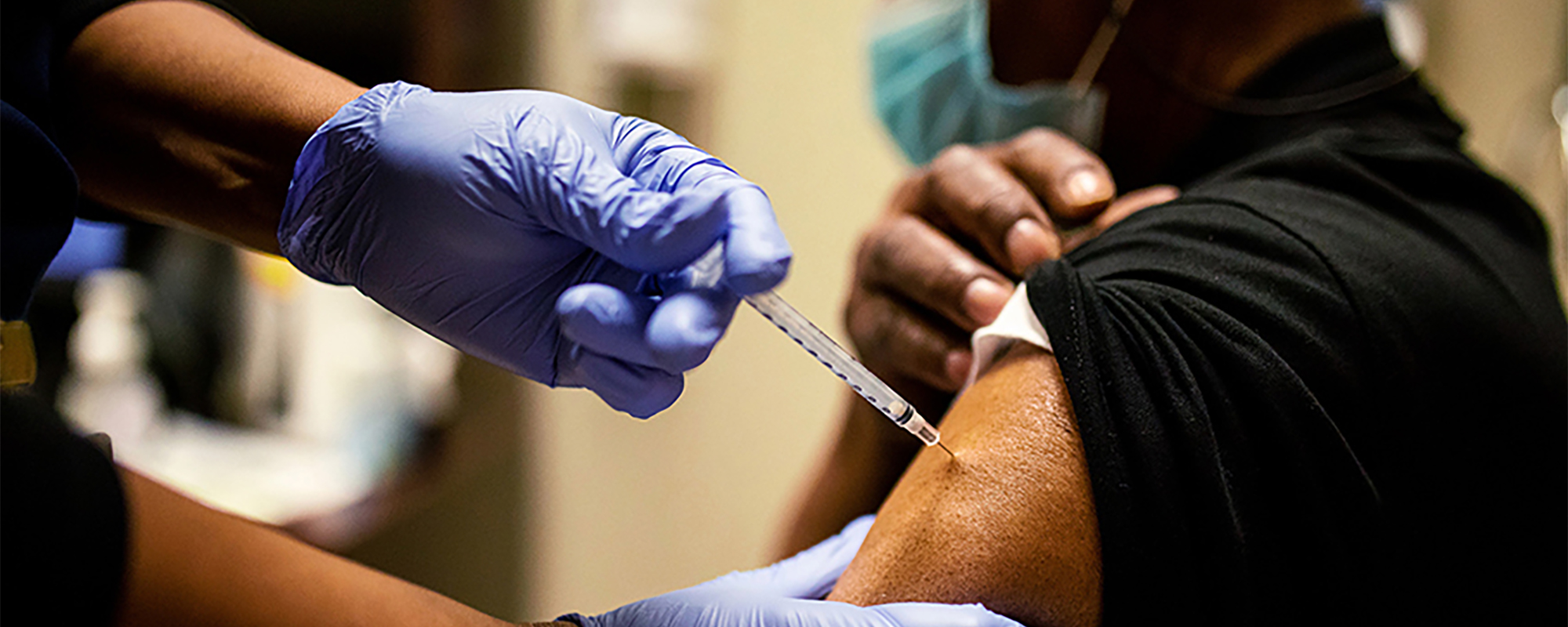
Community Vaccine Collaborative
Project status
Collaborators
This effort was driven by an expansive multidisciplinary team with representation from Penn Medicine's senior leadership team, public safety, physical plant and supply chain, information services, environmental safety, community engagement, communications, and clinical experts from across the health system.
Innovation leads
External partners
Mercy Catholic Medical Center
Opportunity
The initial rollout of the COVID-19 vaccine in the United States was highly inequitable, with White individuals being vaccinated at higher rates than Black individuals in 38 states. In early March 2021, Black residents made up 42 percent of the population in Philadelphia but only 21 percent of those vaccinated.
An array of structural, social, and technological barriers, including online scheduling and the location of vaccine clinics, contributed to the inequity.
Intervention
To address this issue, Penn Medicine’s executive leadership team forged a strategic partnership with Mercy Catholic Medical Center and a coalition of community leaders to develop and implement the Vaccine Collaborative, a multi-health system, community-partnered, rotating vaccination clinic designed to ensure equitable vaccine distribution to residents in vulnerable communities. Several team members from across the Center for Health Care Transformation and Innovation helped lead and support this work.
Working together, we activated community networks, identified highly accessible and familiar locations such as schools, rec centers, and places of worship to host clinics, and hosted information sessions to build trust and reduce vaccine hesitancy.
We leveraged Way to Health to implement a low-tech engagement approach and automated processes wherever possible. The elements listed below were crucial to the success of the program.
-
No/low tech registration: Eligible patients were invited to register via text message or by phone using an interactive voice recording system. Both options allowed users to self-schedule and encouraged them to sign up friends and family who could not do so themselves. When appointments were filled, our systems automatically switched into “wait-list” mode, enabling us to build a registry of patients to reach out to in the event of no-shows on the day of the clinic.
-
Automated reminders: As appointments neared, users received automated reminders, and after appointments, patients received guidance about post-vaccination side effects.
-
Streamlined clinical documentation: Early on, we leveraged a paper-based system for consent and clinical documentation. Eventually, we moved to Upshot, a patient management application developed by our tech team to meet the specific needs of community vaccine clinic documentation.
Impact
Within two weeks, we had clinics up and running in West and Southwest Philadelphia.
Nearly 3,000 patients, 85 percent of whom were Black, were vaccinated at our community clinics in the first 60 days. Intentional flow design and pre-registration enabled an on-time model with minimal wait time to ensure a positive patient experience. And high-touch follow-up through outbound phone calls resulted in a less than .04 percent no-show rate for second doses.
The Community Vaccine Collaborative helped Penn Medicine reach goals for more equitable vaccination. Over 12 months, Penn Medicine distributed more vaccine doses in Philadelphia than any other health system or nonprofit, with its ratios of vaccinations close to the city’s racial and ethnic make-up.
Check out the how-to guide our team published in NEJM Catalyst to learn more about this model for equitable vaccination and how to replicate it in other settings.